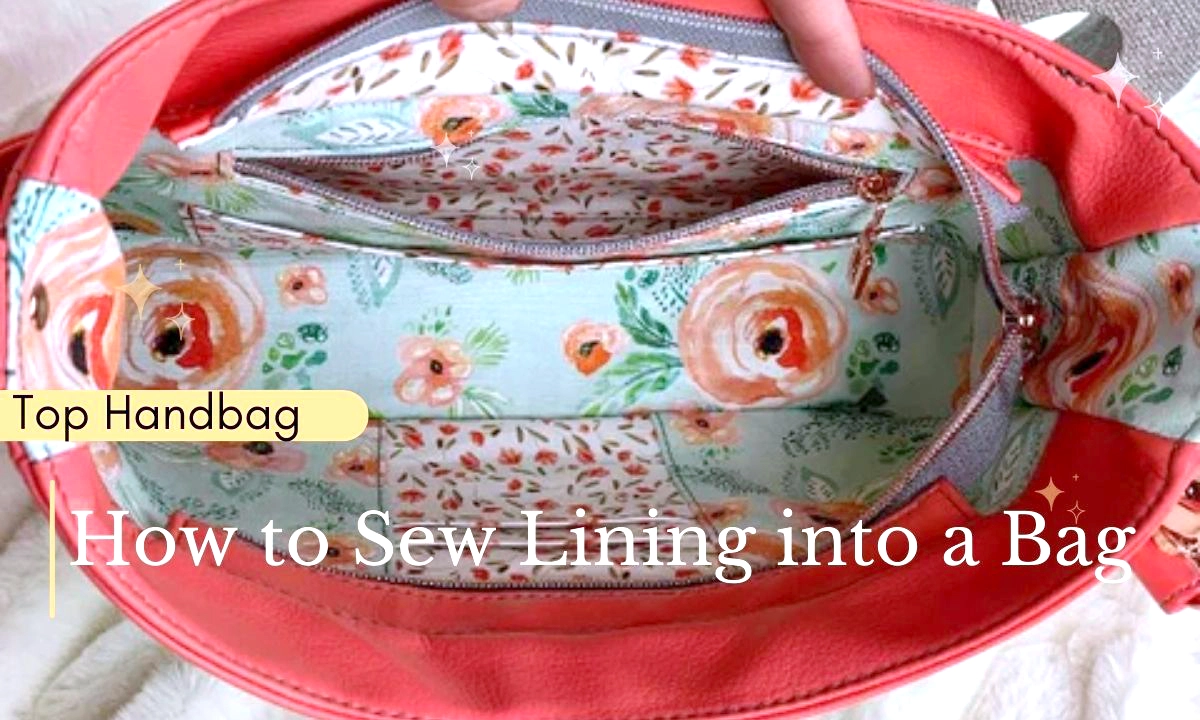How to Sew Lining into a Bag? To sew lining into a bag, begin by placing the lining fabric inside the bag fabric and securing them together with pins. Then, sew along the edges, removing the pins as you go.
Why is lining important in bags?
There are numerous benefits of using lining in bags. Firstly, it provides structural stability to the bag, making it more durable and long-lasting. The lining acts as a protective layer, preventing the outer fabric from fraying or tearing. It also reduces friction between the bag’s contents and the outer material, minimizing wear and tear on both. Moreover, lining enhances the overall appearance of the bag, giving it a more professional and polished look.
These benefits, a bag with lining offers added functionality and organization. The lining can include pockets, compartments, and zippers, providing separate spaces for different items, making it easier to find and access them. It also helps to keep the bag clean and tidy, as the lining can be easily cleaned or replaced if needed.
The importance of lining in bags cannot be understated. It not only improves the bag’s durability and appearance but also enhances its functionality and organization.

Credit: radianthomestudio.com
Preparing The Bag And Lining
Choosing the right fabric for the lining is an important step in sewing lining into a bag. The fabric should complement the outer fabric and be durable enough to withstand regular use. Consider using a lightweight cotton or polyester blend for a soft and smooth finish.
To cut the lining fabric to size, measure the bag’s interior dimensions and add a seam allowance of about 1/2 inch on all sides. This will ensure that the lining fits snugly inside the bag. Preparing the bag for lining involves removing any existing pockets or compartments and making sure that the surface is clean and free from any loose threads or debris.
By following these steps, you can easily sew lining into your bag and give it a professional and polished look.
Sewing The Lining Into The Bag
When sewing a lining into a bag, it is important to first pin the lining to the bag. Start by aligning the top edges of the lining and the bag, making sure they are even. Use sewing pins to secure the lining in place, being careful not to pin through both layers of fabric. Once the lining is pinned, you can start stitching. Thread your sewing machine with a matching thread and sew along the top edge, using a straight stitch.
Take your time and sew slowly to ensure accuracy. After sewing the top edge, you can stitch the sides and bottom of the lining to the bag. Finally, trim any excess fabric and finish off the edges if desired. With these steps, you can easily sew a lining into a bag and give it a professional finish.

Credit: www.knitcroaddict.com
Frequently Asked Questions For How To Sew Lining Into A Bag
How Do You Sew Lining Into A Tote Bag?
To sew lining into a tote bag, first, cut and sew the lining fabric to match the shape of the bag. Then, place the lining inside the bag, aligning the raw edges. Pin or clip the edges together, and sew along the top edge, attaching the lining to the bag.
Finally, press the seams for a finished look.
How Do You Hand Stitch A Bag Lining?
To hand stitch a bag lining, begin by placing the lining fabric inside the bag and securing the top edges together with pins. Use a needle and thread to stitch along the top edge, starting from one side and ending on the other.
Repeat this process for the remaining sides of the lining.
How Do You Line The Inside Of A Fabric Bag?
To line the inside of a fabric bag, measure and cut a lining fabric to fit the bag’s dimensions. Sew the lining fabric pieces together, leaving an opening. Then, place the lining inside the bag, aligning the edges, and sew them together.
Turn the bag right side out through the opening and sew the opening closed.
What Material Do You Use To Line A Bag?
Bags are typically lined with various materials, such as polyester, nylon, cotton, or leather, to provide durability, protection, and a finished look. These materials enhance the bag’s structure and safeguard its contents, ensuring longevity and functionality.
Conclusion
To sum up, sewing lining into a bag is a crucial step that adds functionality and durability to your creation. By following the step-by-step guide in this blog post, you can seamlessly incorporate a lining that not only enhances the aesthetics of your bag but also protects its contents.
With practice and a little patience, you’ll be able to master this technique and create professional-looking bags that withstand the test of time. Happy sewing!

Welcome to Old Money Bag, your premier destination for the finest and most exquisite luxurious bags. Owned and curated by Blog: Leslie Palacio, our website is dedicated to bringing you a collection of handpicked, high-end bags that exude elegance and sophistication.

